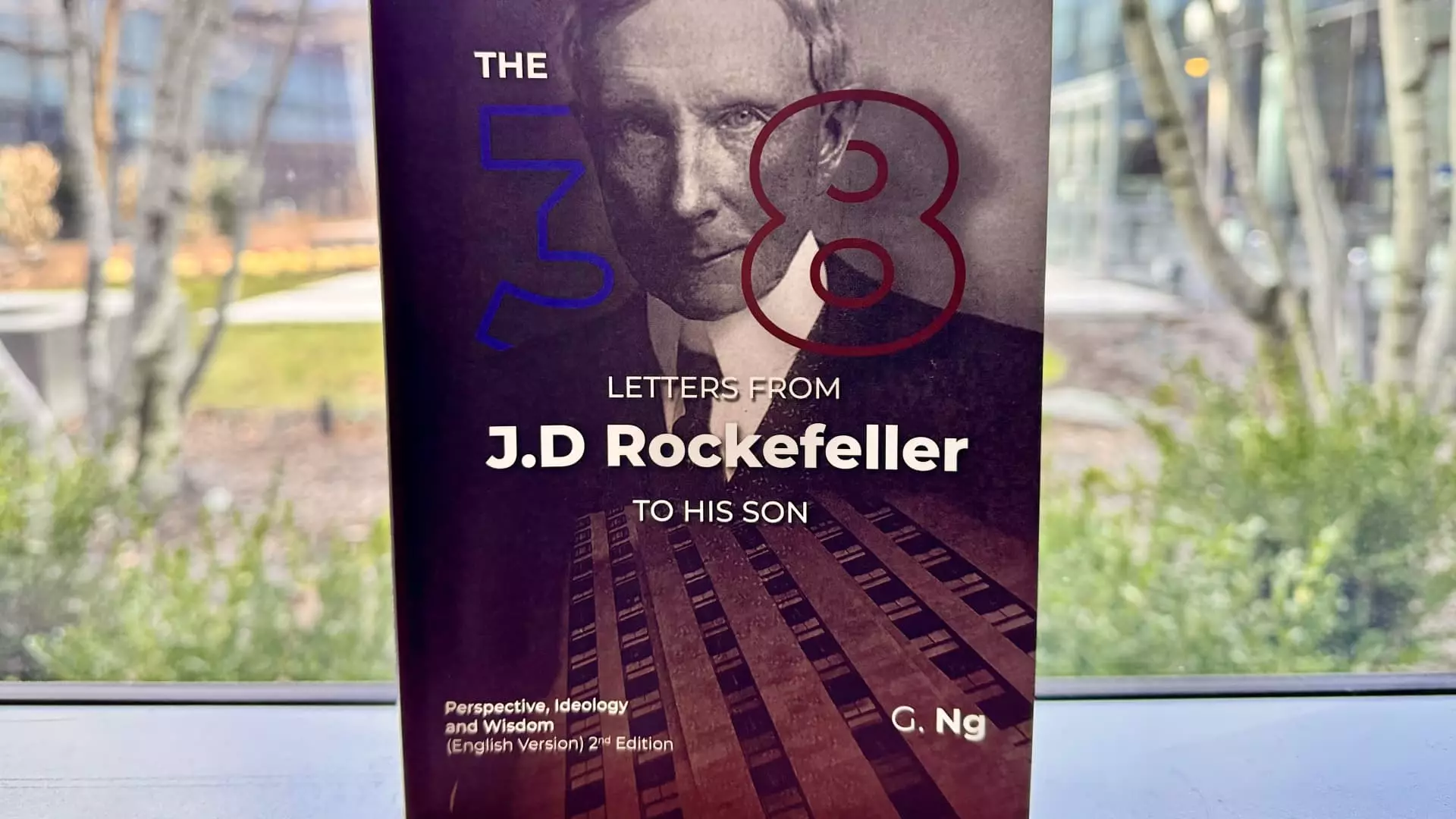Recently, the literary marketplace has been rocked by the emergence of a book that serves as a curious case study in authenticity and the power of branding. Titled “The 38 Letters from J.D. Rockefeller to His Son: Perspective, Ideology and Wisdom,” this tome has shot up the ranks to become a top seller on platforms like Amazon, despite its dubious origins. Competent inquiries by CNBC have cast a shadow over the book’s credibility, as it appears riddled with factual errors and misattributions. A notable absence of rigorous challenge has allowed a narrative to flourish without substantive verification, raising critical concerns about the publishing industry and the mechanisms of information dissemination.
The Rockefeller Archive Center, dedicated to cataloging and preserving the history of one of America’s wealthiest families, has come forward to express its inability to locate any of the letters purportedly authored by John D. Rockefeller Sr. The primary contention lies in the book’s authenticity, with specific examples of errors that exacerbate suspicions. For instance, the text mistakenly references a letter that mentions Citibank—a financial entity established in the latter half of the 20th century—while inaccurately upping the timeline of events depicted within Rockefeller’s life. Such discrepancies bring to light significant ethical considerations for both writers and publishers.
In tandem with the archive’s statements, OpenStax—a well-respected, nonprofit publisher—found itself unwittingly entangled in the controversy, being listed as the book’s publisher. OpenStax has since issued clarifications, vehemently denying their involvement and launching an investigation to safeguard their reputation. This episode raises questions that are seldom addressed in the heated marketplace of ideas: What constitutes authorship? Who holds accountability for muddled narratives, especially when they capitalize on historical figures laden with both legacy and legend?
The fascination with John D. Rockefeller Sr.—an emblematic figure of American capitalism—remains undiminished. His legacy prompts an array of financial, philosophical, and even pedagogical discussions across generations. As America’s first billionaire, his name stirs intrigue not just for his wealth but also for his philanthropic ventures and controversial business ethics. The allure of the Rockefeller name continues to ignite interest, as seen in the over $835 million raised through auction sales of Rockefeller family belongings.
This ongoing fascination plays a central role in the book’s popularity, evidenced by the mounting number of reviews that reflect a high average rating. The engagement may reveal a psychological willingness among consumers to embrace messages that purport to contain wisdom derived from such an illustrious figure. Ironically, the very myths that give rise to such narratives also invite scrutiny, particularly when those narratives are thinly veiled fabrications presenting themselves as authentic wisdom.
The digital marketplace is no stranger to ambiguity, and the rise of self-publishing has complicated the traditional model of authorship and credibility. The case of “The 38 Letters” accentuates the blurred lines between expert validation and consumer belief. At what point does a narrative become susceptible to being hijacked under the pretext of authority? The paradox of information dissemination in the modern age begs an exploration into the paradox wherein wealthy and influential families can catalyze industries simply by association, potentially skirting the ethics of proper representation and historical fidelity.
Promotional platforms like Amazon face challenges with their content guidelines, which are designed to ensure accuracy and integrity in the descriptions of their offerings. However, with the absence of robust gatekeeping measures, parading erroneous content as legitimate has become alarmingly simple. The open-ended questions surrounding who is profiting from these narratives spur further introspection regarding consumer agency. Why are readers drawn to misleading representation when alternatives grounded in academic rigor exist?
In an era characterized by the rampant proliferation of information, the reflections prompted by “The 38 Letters” offer a cautionary tale about the responsibilities inherent in both authorship and publication. It challenges readers to reflect on the sources of wisdom they consume, and the authenticity behind them. For publishers, the situation accentuates the urgent need for enhanced vigilance regarding the integrity of the texts they disseminate.
Ultimately, as an unqualified voice in the marketplace, the book raises vital dialogues surrounding the intersections of celebrity, legacy, and capitalism. The onus rests on both consumers and gatekeepers alike to discern credibility in an increasingly complex literary landscape, as every tale we consume shapes our understanding of history and the figures of our past.

